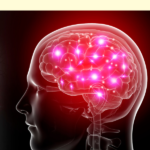Diagnostic tests and procedures help physicians confirm or rule out a neurological disorder or other medical condition. Following are the different types of tests for the Diagnosis of Neurological Disorders.
Table of Contents
Spinal Tap/ Lumbar Puncture
A lumbar puncture is performed in the lower back, in the lumbar region. In a spinal tap, a physician inserts a needle between two lumbar bones (vertebrae) to remove a sample of cerebrospinal fluid (CSF). This fluid (CSF) surrounds the brain and spinal cord and protects them from injury. It can help Diagnosis of Neurological Disorders, serious infections, such as meningitis, Guillain-Barre syndrome, multiple sclerosis, and brain or spinal cord cancers. It is used to analyze the cerebrospinal fluid (CSF), inject anesthetics, dyes. A thin, hollow needle is inserted between the two lower vertebrae (lumbar region), through the spinal membrane, and into the spinal cord. A small amount of fluid (CSF) is withdrawn, and the pressure is measured.
The average cost of a lumbar puncture is approximately 1500 Rs.
Magnetic Resonance Imaging (MRI)
MRI is a technique that uses an MRI machine to create a strong magnetic field around you. Radio waves are directed at your body. It creates a powerful magnetic field and computer-generated radio waves to produce detailed images of body tissues. MRI can show images of the brain or spinal cord using different sequences of magnetic pulses. It is used to diagnose traumatic brain injury, stroke, brain and spinal cord tumors, infection, inflammation, vascular irregularities, abnormally developed brain regions, brain damage associated with epilepsy, and neurodegenerative disorders. The patients have to lie down on a movable table that slides into the opening of the tube.
In few cases, a contrast material or dye, typically gadolinium, is injected through an intravenous (IV) route into a vein in your hand or arm. This contrast material enhances specific details. Following are different types of MRI examination techniques –
MRI Examination Techniques
- Functional MRI (fMRI) – It uses the blood’s magnetic properties to produce real-time images of blood flow to particular areas of the brain.
- Magnetic Resonance Venography (MRV) – An MRV uses magnetic resonance technology. An intravenous (IV) contrast dye is used to visualize the veins. Contrast dye causes the blood vessels to appear opaque on the X-ray image, allowing to visualize the blood vessels for further medical evaluation.
- Breast Scan – It is a non-invasive technique used to examine patients at high risk for breast cancer. Breast MRI can catch areas of concern earlier and in ways not possible with other breast imaging techniques.
- Cardiac MRI is a common, non-invasive test that can help diagnose many heart conditions. Cardiac MRI helps detect heart problems, such as heart valve disease, blockage, damage to the heart muscle.
The average cost of MRI is approximately between 1500 to 25000 Rs. in India.
Diagnosis of Neurological Disorders- X-Ray
An X-ray is a quick, painless test that produces images of the structures inside your body. X-rays of the chest and skull are taken as part of a preliminary neurological assessment. A conventional x-ray uses a concentrated burst of low-dose ionizing radiation. These radiations pass through the body and onto a photographic plate.
The average cost of Xray approximately ranges between 200 to 2500 Rs in India.
Electromyography (EMG)
EMG is used to diagnose nerve damages and muscle disorders, spinal nerve root compression, and motor neuron disorders. EMG is recommended for patients who have signs or symptoms of tingling, numbness, muscle weakness. During an EMG, the technician inserts very fine needles into a muscle. These needles are attached through wires to an EMG machine. A small electrical pulse is given to the skin to stimulate the nerve. The electrical signal is viewed on the EMG machine. EMG assesses changes in electrical signals at rest and during movement. The average cost of EMG approximately ranges between 2500 to 5000 Rs in India.
Nerve Conduction Study (NCS)
A nerve conduction study (NCS) test is also called a nerve conduction velocity (NCV). It measures how fast an electrical impulse moves through a nerve. NCS can identify nerve damage. During the test, the lab technician usually attaches electrode patches to the skin to stimulate the nerves. Two electrodes are placed on the skin over the nerve. One electrode stimulates the nerve with a very mild electrical impulse. The other electrode records it. Another electrode records the resulting electrical activity. This process is repeated for each nerve being tested. The speed is then calculated by measuring the distance between electrodes and the time it takes for electrical impulses to travel between electrodes.
The average cost of NCS approximately ranges between 500 to 6000 Rs in India.
Diagnosis of Neurological Disorders- Computed Tomography (CT) Scan
It uses X-rays to produce two-dimensional images of organs, bones, and tissues. CT scans can quickly detect hemorrhage (bleeding) in the brain, brain tumors and cysts, brain damage from the head injury, hydrocephalus, brain damage causing epilepsy, and encephalitis. A CT of the spine can be used to show spine fractures, spinal stenosis, or herniated discs. The patient has to lie on a narrow, motorized table that slides into a tunnel through the opening. While the table moves into the scanner, detectors and the X-ray tube rotate around the patients. Each rotation yields several images of thin slices (scanning) of your body.
The average cost of a CT scan approximately ranges between 1500 to 3500 Rs in India.
Biopsy
A biopsy involves the removal and examination of a small piece of tissue from the body. Muscle or nerve biopsies help in the Diagnosis of Neurological Disorders (neuromuscular disorders). Muscle biopsy uses a small sample of muscle or nerve that is removed under a local anesthetic and studied under a microscope. A brain biopsy involves removing a small piece of tumor or brain tissue to determine tumor type or certain infections. Neurosurgeon drills a small hole into the skull and inserts a thin needle through the hole. The brain tissue is removed using a needle-guided CT or MRI scan. The biopsy sample is then viewed under a microscope to determine if it is benign or cancerous.
The average cost of biopsy approximately ranges between 1500 to 4500 Rs in India.
Diagnosis of Neurological Disorders- Genetic Testing
Genetic testing can determine a neurological disease of hereditary origin to identify if they carry one of the genes known to cause the disorder. Clinical testing assesses mutations in specific genes or certain regions of several genes. Prenatal genetic testing helps to identify many neurological disorders and genetic abnormalities in fetuses. Amniocentesis is usually done for congenital defects. Chorionic villus sampling uses the removal and testing of a tiny sample of the placenta. A blood sample or amniotic fluid is collected to undergo the process of genetic testing.
The average cost of genetic testing approximately ranges between 3000 to 70000 Rs in India.
Positron Emission Tomography (PET)
Positron Emission Tomography (PET) scans provide 2D & 3D pictures of brain activity. PET scans for the brain are used to detect tumors and diseased tissue, show blood flow, and measure cellular and tissue metabolism. It can evaluate people who have epilepsy or certain memory disorders and show brain changes following injury. A tracer (low-level radioactive isotope) is injected into the bloodstream. The person lies still while overhead sensors detect gamma-rays in the body tissues. A computer processes the information and displays it on a video monitor. PET typically measures the tracer’s uptake in the brain.
The average PET/CT scan is Rs. 15000–27000 in India.
Angiography
It is a test that involves injecting dye into the arteries or veins to detect blockage or narrowing. Angiograms are used in specific strokes where there is a possibility of unblocking the artery using a clot retriever. Angiograms can also show the blood supply to the tumor before surgery. A spinal angiogram is used to detect blood vessels malformations in the vessels to the spinal cord. MR angiograms (MRA) or CT angiograms are specialized MRI scans. Nowadays, MRA is preferred over Cerebral angiograms.
The average cost of genetic testing approximately ranges between 5000 to 25000 Rs in India.
Diagnosis of Neurological Disorders- Electroencephalogram (EEG)
It is a test that detects electrical activity in the brain. The brain cells communicate via electrical impulses and are active all the time. This brain activity shows up as wavy lines on an EEG recording. An EEG is one of the main diagnostic tests for epilepsy. It also plays a role in diagnosing other brain disorders (Diagnosis of Neurological Disorders) like brain tumors, brain damage, inflammation, stroke, sleep disorders. A technician attaches electrodes to the scalp using adhesives. The electrodes are connected with wires to an instrument that amplifies the brain waves and records them on computer equipment. At various times, the technician might ask to open and close eyes, perform a few simple calculations, read a paragraph, look at a picture, breathe deeply for a few minutes, or look at a flashing light. A video camera captures body motions while the EEG records\ brain waves. This combined recording can help to treat the condition.
The average cost of EEG approximately ranges between 1000 to 3000 Rs in India.
- Amyotrophic Lateral Sclerosis: Symptoms and Diagnosis
- Aneurysms: bulging of a blood vessel wall
- Ataxia: Lack of voluntary coordination of muscle movements
- Attention Deficit Hyperactivity Disorder (ADHD): What You Need to Know
- Bipolar Disorder
- Brain aneurysms: Symptoms and Diagnosis
- Brain Hemorrhage
- Brain Stroke: Symptoms, Diagnosis and Treatment
- Cerebral Aneurysm
- Cerebral edema
- Cervical Disc Replacement
- Coping with Acute Spinal Cord Injury: A Supportive Guide
- Dementia
- Encephalitis
- Epilepsy
- Epilepsy and Seizures
- Guillain-Barré Syndrome
- Have you heard of Bell’s Palsy? Know the details
- How Cerebral Hypoxia can lead to brain damage?
- How Does Attention Deficit Hyperactivity Disorder affect Children?
- Huntington’s disease (HD)
- Hydrocephalus
- Increased Intracranial Pressure
- Meningitis
- Migraine

























Pingback: Fortis Hospital Mumbai: Neurological Treatment - NeuroHealth
Pingback: Aneurysms - NeuroHealth
Pingback: What exactly happens in Alzheimer's Disease? - NeuroHealth
Pingback: How Cerebral Hypoxia can lead to brain damage? - NeuroHealth
Pingback: Bipolar Disorder - NeuroHealth
Pingback: Encephalitis - NeuroHealth
Pingback: Epilepsy - NeuroHealth
Pingback: Migraine - NeuroHealth
Pingback: Brain Hemorrhage - NeuroHealth
Pingback: Huntington's disease (HD) - NeuroHealth
Pingback: Neurodegenerative disorders - NeuroHealth
Pingback: Mononeuropathy - NeuroHealth
Pingback: Increased Intracranial Pressure - NeuroHealth
Pingback: Poliomyelitis - NeuroHealth
Pingback: Polyneuropathy - NeuroHealth